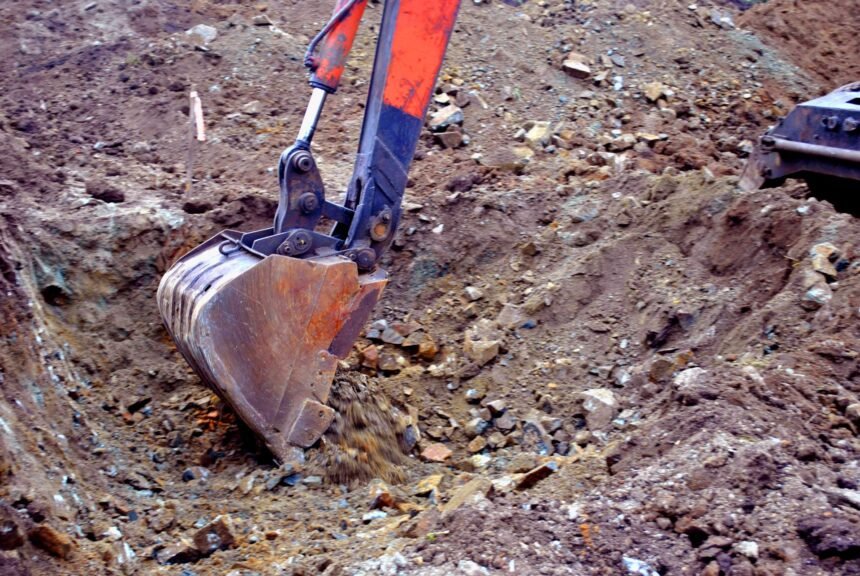Excavation looks simple. Dig a hole. Get the job done. But it’s one of the riskiest parts of construction. One mistake can lead to a collapse, injury or worse. That’s why it’s tightly controlled. Rules are in place for a reason. Still, accidents happen. This article covers the biggest risks and how they creep in.
Why Excavation Safety Matters
Trenches kill. That’s the blunt truth. In the UK, workers have been crushed or suffocated when sides gave way. A moment’s lapse is all it takes. The costs are huge—not just lives lost, but fines, delays and court cases.
Construction workers are six times more likely to die on the job than those in other industries. Excavation plays a big part in that. Poor planning or lack of training adds to the danger.
Major Health and Safety Risks of Excavation
1. Ground Collapse
This is the biggest threat. A trench looks solid, but can give way in seconds. Soil shifts, vibrations from traffic or rain can all cause a collapse. Workers inside get buried with little chance to escape. That’s why support systems are vital.
2. Falling into Excavations
Open pits with no barriers? That’s a fall waiting to happen. People, tools or even small vehicles can go in. It’s worse at night or in bad weather. Falls from height are a leading cause of injury. Excavation sites need clear signs and edge protection.
3. Underground Services
Digging without checks is reckless. Live wires, gas pipes and water mains often lie beneath the surface. Strike one, and it’s chaos. Fires, flooding or electrocution follow. A CAT and Genny training certificate shows the worker knows how to locate buried services before digging. It’s not just useful—it’s essential.
4. Hazardous Atmospheres
Some trenches build up dangerous gases. Others run out of oxygen. Both can make workers collapse. It’s quiet and quick. Testing the air before entry is the only way to know it’s safe. Ventilation might be needed.
5. Mobile Plant Accidents
Excavators and dumpers move around fast. Operators often can’t see what’s near the bucket or wheels. A single slip in judgment can crush someone. Spotters, signals and barriers help control this risk.
6. Water Ingress
Water builds up fast. Heavy rain, high water tables or broken pipes can flood a trench. That weakens walls and makes collapse more likely. Workers can also drown in confined spaces.
7. Falling Materials
Tools, chunks of concrete or soil heaps can tumble into the trench. One hit is enough to injure or knock someone unconscious. Keep the edge clear. Store tools away from the edge. Spoil heaps should be placed at a safe distance.
What Makes Excavation Even Riskier?
The risks don’t stop at the trench. Some jobs are more dangerous than others. A few extra factors can turn a tricky dig into a death trap.
Soil Type and Stability
Not all soil behaves the same. Clay holds firm for a bit, then slumps. Sand moves the moment it’s disturbed. Waterlogged ground slides easily. Knowing the soil type helps plan support. Skipping this step invites collapse.
Excavation Depth and Duration
Deeper trenches need stronger support. The longer the trench stays open, the more the soil shifts. Weather, vibrations and time all weaken the sides. Leaving a deep trench unsupported for days is asking for trouble.
Proximity to Roads, Buildings or Other Structures
Heavy traffic shakes the ground. So do nearby machines. Trenches close to foundations or roads feel those vibrations. The weight above adds pressure. That makes the walls less stable. Engineers must check if the support is strong enough.
Keeping Workers Safe in the Pit
Staying safe takes more than luck. Control measures exist for a reason. The right mix of kit, checks, and common sense saves lives.
Shoring, Battering or Trench Boxes
Trench walls must be supported. Shoring props up the sides. Battering cuts the soil at a safe angle. Trench boxes create a shield around workers. Pick the right method for the depth and soil. Don’t skip it. Ever.
Edge Protection and Barriers
Barriers stop people or gear from falling in. Simple boards or rails work. Add clear signs. Bright colours help. At night, extra lighting’s a must.
Service Detection and Isolation
Before digging, find every buried service. Use a cable avoidance tool and signal generator. Workers should hold a valid “cat and genny training certificate” to prove they know how to do this properly. One strike to a live cable is enough to kill.
Atmosphere Monitoring
Air inside the trenches needs checking. Gas monitors detect oxygen levels, carbon monoxide and other toxic gases. Never trust your nose. Some gases have no smell. Use fans or blowers to keep air moving when needed.
Water Management
Pumps remove standing water. Drainage channels keep water out. Cover pits when possible during rain. Check nearby pipes before digging. Plan for flood risks.
Final Word: Don’t Dig Blind
Digging without a plan is dangerous. Most risks are easy to avoid with the right steps. Check the ground. Support the sides. Test the air. Look for cables. Stay alert.
Excavation doesn’t forgive mistakes. The ground won’t wait. It moves fast. Safety means staying ahead of it, not reacting after things go wrong. If teams treat each dig like it could go wrong, they’re more likely to make sure it doesn’t.







